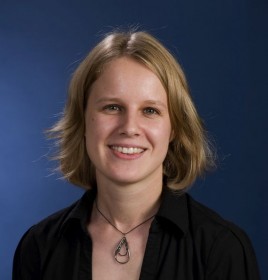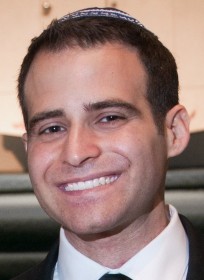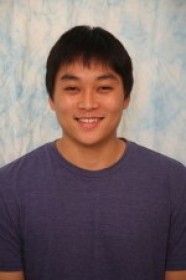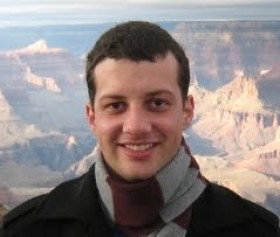Multimodal Machine Learning: Modeling Human Communication Dynamics
Event Location: NSH 1305Bio: Louis-Philippe Morency is Assistant Professor in the Language Technology Institute at the Carnegie Mellon University where he leads the Multimodal Communication and Machine Learning Laboratory (MultiComp Lab). He received his Ph.D. and Master degrees from MIT Computer Science and Artificial Intelligence Laboratory. In 2008, Dr. Morency was selected as one of [...]
Towards Large-scale Video Understanding
Event Location: NSH 1507Bio: Chen Sun is a Ph.D. candidate in the Computer Vision group at University of Southern California, advised by Prof. Ram Nevatia. His research interest includes Computer Vision and Machine Learning, with a focus on large-scale video understanding. Chen got his bachelor degree in Computer Science at Tsinghua University, Beijing. He has [...]
Learning optimal seeds for diffusion based salient object detection
Event Location: NSH 1507Bio: Vijay Mahadevan is Research Scientist at Yahoo Labs in Sunnyvale, CA. He received the Ph.D degree in Electrical Engineering from UC San Diego. He also has an M.S. from Rensselaer, and a B.Tech from Indian Institute of Technology, Madras. His interests are in the areas of computer vision, machine learning and [...]
Crowds and Robots: Leveraging the Web to Advance Robot Autonomy
Event Location: NSH 1305Bio: Sonia Chernova is the Catherine M. and James E. Allchin Early-Career Assistant Professor in the School of Interactive Computing, and the director of the Robot Autonomy and Interactive Learning (RAIL) lab. Her research interests span robotics, interactive machine learning, adjustable autonomy, human computation and human-robot interaction. Dr. Chernova received her Ph.D. [...]
Using Motion to Understand Objects in the Real World
Event Location: NSH 1507Bio: David Held is a Computer Science Ph.D. student at Stanford doing research at the intersection of robotics, computer vision, and machine learning. He is co-advised by Sebastian Thrun and Silvio Savarese. David has also interned at Google, working on the self-driving car project. Before Stanford, he worked as a software developer [...]
A Reflex-based Neuromuscular Control Model of Human Locomotion
Event Location: GHC 4405Abstract: The neural controls of human and animal locomotion have been studied over centuries. However, much of our knowledge about the locomotion control of complex species, especially humans, still relies on extrapolating from what is known in simpler animals. One barrier for better understanding the control of human locomotion is that we [...]
Constrained Convolutional Neural Networks for Weakly Supervised Segmentation
Event Location: NSH 1507Bio: Philipp is a postdoctoral researcher at UC Berkeley. He received his PhD from Stanford University in 2014 under the supervision of Vladlen Koltun. His main research interests lie in Computer vision, Machine learning and Computer Graphics. He is particularly interested in image segmentation and deep learning. Abstract: In this talk, I'll [...]
Learning deconvolution network for semantic segmentation: DeconvNet and DecoupledNet
Event Location: NSH 1507Bio: Bohyung Han Associate Professor Dept. of Computer Science and Engineering POSTECH, Korea Bohyung Han received the B.S. and M.S. degrees from the Department of Computer Engineering at Seoul National University, Korea, in 1997 and 2000, respectively, and the Ph.D. degree from the Department of Computer Science at the University of Maryland, [...]
Automatic Analysis of Facial Behaviour
Event Location: DH 2210Bio: Maja Pantic obtained her PhD degree in computer science in 2001 from Delft University of Technology, the Netherlands. Until 2005, she was an Assistant/ Associate Professor at Delft University of Technology. In 2006, she joined the Imperial College London, Department of Computing, UK, where she is Professor of Affective & Behavioural [...]
Moment-based Algorithms for Structured Prediction
Event Location: GHC 4405Abstract: Latent variable models constitute a compact representation for complex, high dimensional data. This is useful in many applications in Robotics and Natural Language Processing (NLP). Latent models are however very hard to learn, in part because of the non-convexity of the likelihood function. The main difficult is associated with estimating the [...]









